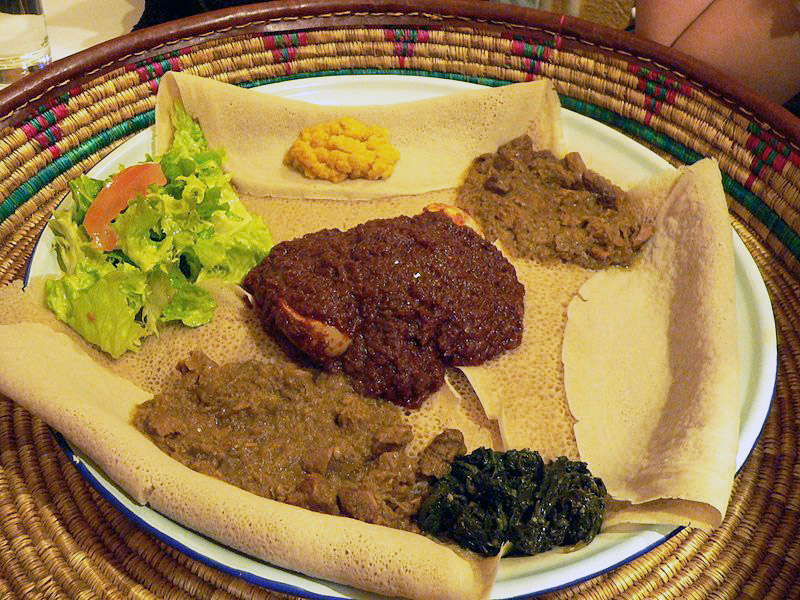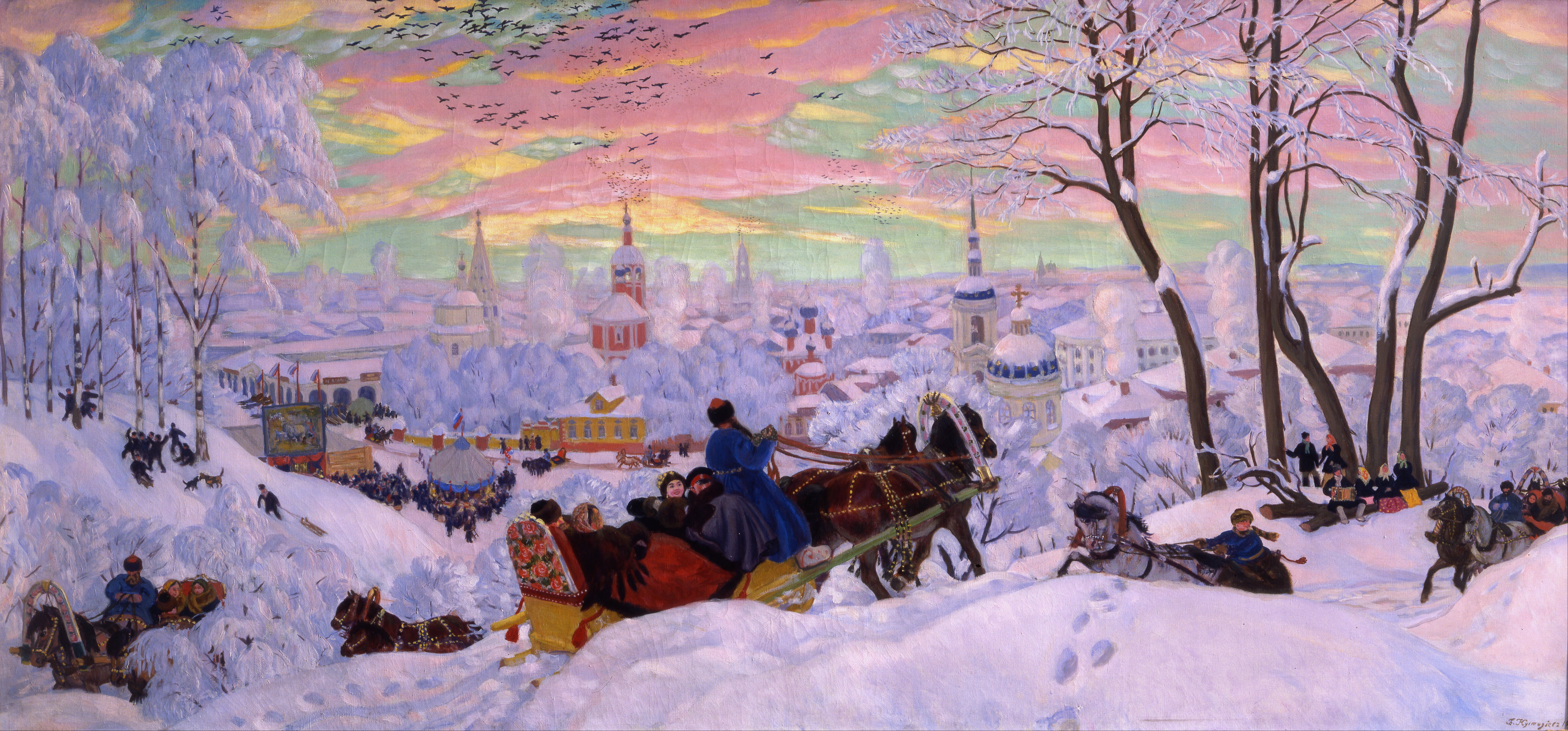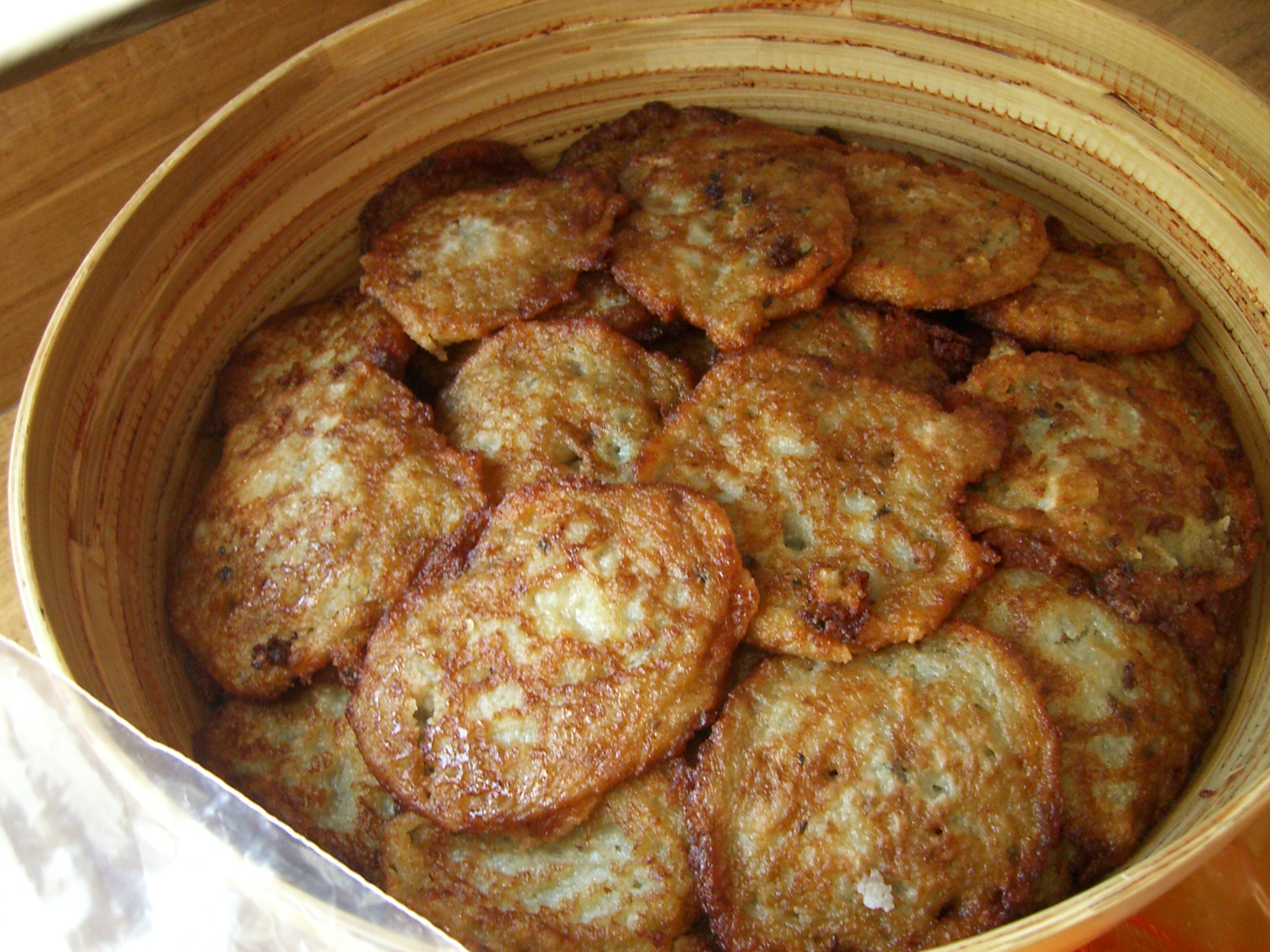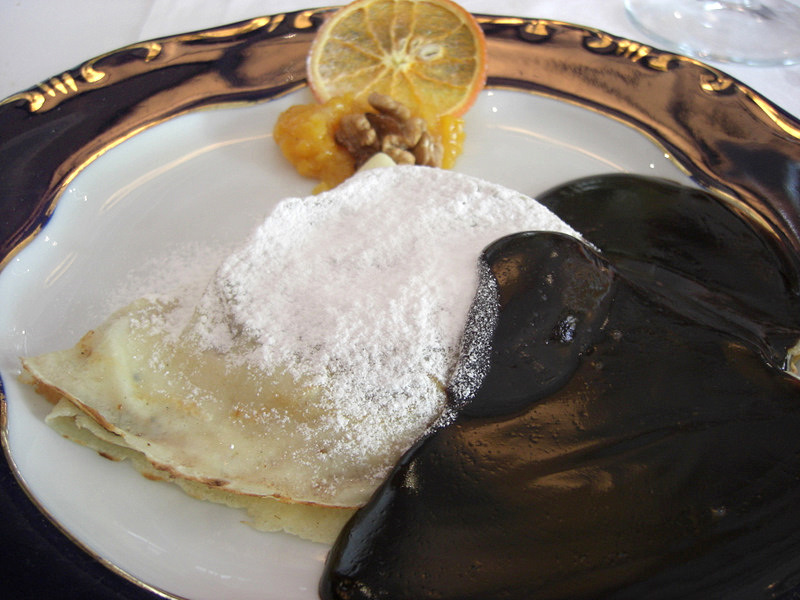|
Pancakes
A pancake, also known as a hotcake, griddlecake, or flapjack, is a flat type of batter bread like cake, often thin and round, prepared from a starch-based Batter (cooking), batter that may contain eggs, milk, and butter, and then cooked on a hot surface such as a griddle or frying pan. Archaeological evidence suggests that pancakes were probably eaten in prehistoric societies. The pancake's shape and structure varies worldwide. In England, pancakes are often Leavening agent, unleavened and resemble a crêpe. In Scotland and North America, a leavening agent is used (typically baking powder) creating a thick fluffy pancake. A ''crêpe'' is a thin pancake of Brittany, Breton origin cooked on one or both sides in a special pan or crepe maker to achieve a lacelike network of fine bubbles. A well-known variation originating from southeast Europe is palatschinke, a thin moist pancake fried on both sides and filled with jam, cream cheese, chocolate, or ground walnuts, but many other f ... [...More Info...] [...Related Items...] OR: [Wikipedia] [Google] [Baidu] |
Blini
Blini (plural ''blinis'' or ''blini'', rarely ''bliny''; pl., Ukrainian: млинці pl., ''mlyntsi''), singular: blin, are an Eastern European crêpe made from various kinds of flour of buckwheat, wheat, etc. They may be served with smetana, cottage cheese, caviar and other garnishes, or simply smeared with butter. They are a traditional Slavic dish. In the West, blini traditionally refers to small savory pancakes made with leavened batter. In modern Russian, the term most often refers to pan-sized leavened thin pancakes, although smaller leavened pancakes are also called blini. Smaller and thicker pancakes (with several of them baked on one larger pan) are called '' oladyi''. Blintzes, called ''blinchiki'' (little blinis) in Russian are an offshoot of blini or crêpes. They are basically rolls based on thin pancakes usually made of wheat flour, folded to form a casing for various kinds of filling, typically cheese, fruit, or (in Russian cuisine) pre-fried mince ... [...More Info...] [...Related Items...] OR: [Wikipedia] [Google] [Baidu] |
Griddle
A griddle, in the UK also called a girdle, is a cooking device consisting mainly of a broad, usually flat cooking surface. Nowadays it can be either a movable metal pan- or plate-like utensil, a flat heated cooking surface built onto a stove as a kitchen range, or a compact cooking machine with its own heating system attached to an integrated griddle acting as a cooktop. A traditional griddle can either be a brick slab or tablet, or a flat or curved metal disc, while in industrialized countries, a griddle is most commonly a flat metal plate. A griddle can have both residential and commercial applications and can be heated directly or indirectly. The heating can be supplied either by a flame fuelled by wood, coal or gas; or by electrical elements. Commercial griddles run on electricity, natural gas or propane. [...More Info...] [...Related Items...] OR: [Wikipedia] [Google] [Baidu] |
Shrove Tuesday
Shrove Tuesday (also known as Pancake Tuesday or Pancake Day) is the final day of Shrovetide, which marks the end of the pre-Lenten season. Lent begins the following day with Ash Wednesday. Shrove Tuesday is observed in many Christian state, Christian countries through participating in Confession (religion)#Christianity, confession, the ritual burning of the previous year's Holy Week palms, finalizing one's Lenten sacrifice, as well as eating pancakes and other sweets. Shrove Tuesday is observed by many Christians, including Anglicans, Lutherans, Methodists, Western Orthodox, Western-rite Orthodox Christians, and Roman Catholics, who "make a special point of self-examination, of considering what wrongs they need to repent, and what amendments of life or areas of spiritual growth they especially need to ask God's help in dealing with." This moveable feast is determined by date of Easter, the date of Easter. The expression "Shrove Tuesday" comes from the word ''wikt:en:shrive, shr ... [...More Info...] [...Related Items...] OR: [Wikipedia] [Google] [Baidu] |
Potato Pancake
Potato pancakes are shallow-fried pancakes consisting of grated or ground potato, matzo meal or flour and a binding ingredient such as egg or apple sauce, often flavored with grated garlic or onion and seasonings. They may be topped with a variety of condiments, ranging from the savory (such as sour cream or cottage cheese), to the sweet (such as apple sauce or sugar), or they may be served plain. The dish is sometimes made from mashed potatoes to make pancake-shaped croquettes. Some variations are made with sweet potatoes. In different cultures Potato pancakes are associated with various European cuisines, including Irish (as boxty), German and Austrian (as '' Kartoffelpuffer'', ', ', ' and '), Dutch (as ', ', '), Belarusian (as '), Bulgarian (as '), Czech (as '','' ' or ''vošouch''), Hungarian (as ', and other names), Jewish (as ', , ', plural '), Latvian (as '), Lithuanian (as '), Luxembourg ('), Polish (as '), Romanian (as ''tocini'' or ''tocinei''), Russi ... [...More Info...] [...Related Items...] OR: [Wikipedia] [Google] [Baidu] |
Kaletez
', called ' in French, is a buckwheat pancake in Breton cuisine. According to legend, the buckwheat pancake was born thanks to a Breton woman spilling buckwheat slop on a hot pebble in the chimney. Small quantities of buckwheat pollen have been found in the peat lands of Brittany that date to the 12th century. Buckwheat agriculture appeared in Brittany at the beginning of the 16th century: its output is irregular and low, but it was not taxed. Buckwheat grows on poor, infertile land and can be harvested three months after sowing, giving the nickname "the 100 days plant". Among many legends about Anne of Brittany, it is said that she developed its agriculture. Currently, the local production of buckwheat cannot supply the 15000 tons consumed per year in France, the preparation of these buckwheat pancakes relies on imports from China, Poland and Canada. A "protected geographic indicator" exists for Breton buckwheat flour and the "Blé noir tradition Bretagne" society consists o ... [...More Info...] [...Related Items...] OR: [Wikipedia] [Google] [Baidu] |
Ploye
A ploye () is a Brayon flatbread type mix of buckwheat flour, wheat flour, baking powder and water which is extremely popular in the Madawaska region in New Brunswick and Maine. First invented in Nova Scotia, they later spread to the St. John Valley and Maine. Much like grits or potatoes, the ploye was originally a simple carbohydrate filler food for the local population. It was very cheap, easy to make, and with local toppings, such as maple syrup, brown sugar or cretons, could vary in taste. This staple is often eaten with baked beans. Over time, however, it simply became a traditional dish. The recipe varies from family to family and is handed down through the generations. The batter itself is very thin and runny so as to ensure it does not get too thick while cooking. The ploye resembles a crêpe in thickness when cooking. In Madawaska, Maine, the ployes have a yellow color due to the type of buckwheat used in the mixture. Recipes sometimes include a little vinegar to kee ... [...More Info...] [...Related Items...] OR: [Wikipedia] [Google] [Baidu] |
Palatschinke
Palatschinke (plural palatschinken) is a thin crêpe-like variety of pancake of Greco-Roman origin. The dessert is common in the Balkans, Central and Eastern Europe. History and etymology The dish is of Greco-Roman origin.. In 350 BCE, the ancient Greek poets Archestratos and Antiphanes first mentioned ''plakous''. Cato the Elder's short work '' De agri cultura'' ("On Farming") from about 160 BC includes an elaborate recipe for ''placenta''. Palatschinke still bears the same name of its Greek and Roman ancestors. The name comes from the Latin word ''placenta'', which in turn is derived from the Greek word ''plakous'' for thin or layered flat breads. The name of the dish has followed a track of borrowing across several languages of Central and Southeastern Europe; the dish originates in the Roman era of Central Europe and the Austrian- German term ''Palatschinke'', the Czech ''palačinka'', the Slovak ''palacinka'', and the Croatian- Serb ''palačinka'' are deemed to have ... [...More Info...] [...Related Items...] OR: [Wikipedia] [Google] [Baidu] |
Crêpe
A crêpe or crepe ( or , , ) is a dish made from unleavened batter or dough that is cooked on a frying pan or a griddle. Crêpes are usually one of two varieties: ''sweet crêpes'' () or ''savoury galettes'' (). They are often served with a wide variety of fillings such as cheese, fruit, vegetables, meats, and a variety of spreads. Crêpes can also be flambéed, such as in crêpes Suzette. Etymology The French term "" derives from , the feminine version of the Latin word , which means "curled, wrinkled, having curly hair." Traditions In France, crêpes are traditionally served on the Christian holiday Candlemas (), on February 2. On that day in 472, Pope Gelasius I offered crepes as sacramental bread to French pilgrims that were visiting Rome for the Chandeleur. The sacramental bread was replaced by crêpes in France, and the day became known as "Le Jour des Crêpes" ("The Day of the Crêpes"). The day is also celebrated by many as the day that marks the transiti ... [...More Info...] [...Related Items...] OR: [Wikipedia] [Google] [Baidu] |
Batter (cooking)
Batter is a flour mixture with liquid and other ingredients such as sugar, salt, egg, milk and leavening agent, leavening used for cooking. Batters are a pourable consistency that cannot be kneaded. Batter is most often used for cake, pancakes and as a coating for fried foods. It is also used for a variety of batter breads. The word ''batter'' comes from the French word ''battre'', which means ''to beat'', as many batters require vigorous beating or whisking in their preparation. Methods Many batters are made by combining dry flours, flour with liquids such as water, milk, or egg as food, eggs. Batters can also be made by soaking grains in water and grinding them wet. Often a leavening agent such as baking powder is included to aerate and fluff up the batter as it cooks, or the mixture may be naturally Fermentation (food), fermented for this purpose as well as to add flavour. Carbonated water or another carbonated liquid such as beer may instead be used to aerate the batter i ... [...More Info...] [...Related Items...] OR: [Wikipedia] [Google] [Baidu] |
Buckwheat Pancake
A buckwheat pancake is a pancake made with buckwheat flour. Types of buckwheat pancake associated with specific regions include: * ''Blini'', Eastern Europe, with a buckwheat variety particularly popular in Russia, Ukraine (''hrechanyky'' or ''гречаники''), and Lithuania (''grikių blynai'') * ''Crêpe bretonne'' (''krampouezhen'' in Breton), a savory pancake also known as ''bleud ed-du ''from Lower Brittany in France * ''Kaletez'' (''galette de sarrasin''), a buckwheat pancake from the Upper Brittany Breton cuisine, cuisine in France. * ''Memil-buchimgae'', a variety of Korean pancake with buckwheat flour and cabbage * ''Ploye'', a pancake particularly popular in New Brunswick and Maine. See also * List of buckwheat dishes References Pancakes Buckwheat dishes {{dessert-stub ... [...More Info...] [...Related Items...] OR: [Wikipedia] [Google] [Baidu] |
Memil-buchimgae
''Memil-buchimgae'' () or buckwheat pancake is a variety of ''buchimgae'', or Korean pancake. It is a crepe-like dish made of thin buckwheat batter and napa cabbage. Along with other buckwheat dishes, it is a traditional local speciality of Gangwon Province, where buckwheat is extensively cultivated due to its cooler mountainous climate. Pyeongchang and Jeongseon counties are famous for buckwheat dishes such as '' memilmuk'' (buckwheat jelly) and '' memilguksu'' (buckwheat noodles). Pyeongchang's biggest local festival was called Memilbuchigi festival before it was renamed Pyeongchang Festival in 2015. (''Memilbuchigi'' means ''memilbuchimgae'' in Gangwon dialect.) Numerous ''memilbuchimgae'' can be seen in Pyeongchang Market, a farmers' market held in Pyeongchang every five days. Preparation The batter is prepared by mixing buckwheat flour and water to a thin consistency. Sometimes a small amount of wheat flour or starch can be added to it because buckwheat has less g ... [...More Info...] [...Related Items...] OR: [Wikipedia] [Google] [Baidu] |
Honey
Honey is a sweet and viscous substance made by several species of bees, the best-known of which are honey bees. Honey is made and stored to nourish bee colonies. Bees produce honey by gathering and then refining the sugary secretions of plants (primarily floral nectar) or the secretions of other insects, like the honeydew of aphids. This refinement takes place both within individual bees, through regurgitation and enzymatic activity, and during storage in the hive, through water evaporation that concentrates the honey's sugars until it is thick and viscous. Honey bees stockpile honey in the hive. Within the hive is a structure made from wax called honeycomb. The honeycomb is made up of hundreds or thousands of hexagonal cells, into which the bees regurgitate honey for storage. Other honey-producing species of bee store the substance in different structures, such as the pots made of wax and resin used by the stingless bee. Honey for human consumption is collected ... [...More Info...] [...Related Items...] OR: [Wikipedia] [Google] [Baidu] |









